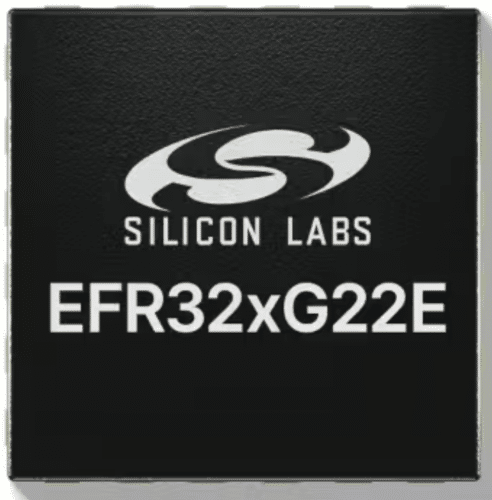The new SoCs are designed for low-power IoT devices that operate on energy harvested from environmental sources, enabling efficient, battery-free innovations.

Silicon Labs has introduced new wireless system-on-chip (SoC) components—the BG22E, MG22E, and FG22E—designed for devices that operate on energy harvested from the environment without a battery.
These xG22E parts target “Ambient IoT,” where devices are powered by energy from sources such as radio waves, light, heat, or movements. They are described as the most efficient wireless microcontrollers made by SiLabs. These parts can activate from zero energy to transmission readiness in eight milliseconds using 150µJ of energy. They use less energy from deep sleep mode than other models, requiring 16.6µJ to activate in 1.83 milliseconds. A pin input, a real-time clock, or the RFSense radio system can activate the microcontrollers.
The SoCs are aimed at developers and manufacturers of IoT devices requiring ultra-low power consumption. These chips are ideal for consumer electronics, industrial IoT, healthcare, smart cities, and agriculture. They cater to sectors where energy efficiency and the ability to harness ambient energy are crucial, making them suitable for innovative, sustainable IoT solutions across diverse industries.
Each part features an Arm Cortex-M33F CPU core. The initial letter in their names indicates the type of radio block included: BG22E includes Bluetooth 5.4 Low Energy, MG22E includes Bluetooth 5.2 and adds support for Zigbee PRO and Zigbee Green Power, and FG22E uses a 2.4GHz radio system with multiple modulation options. The “E” suffix denotes these are models for Ambient IoT applications, distinguishing them from other counterparts.
“As the market for energy harvesting and low-power solutions grows, Silicon Labs remains dedicated to enhancing our wireless MCU [Microcontroller Unit] and radio stack capabilities to advance the development of battery-free IoT [Internet of Things] solutions,” says Silicon Labs’ Ross Sabolcik of the company’s latest parts. “Our efforts to prioritize energy efficiency and increase device longevity underscore our commitment to fostering a more sustainable IoT ecosystem.”
For more information, click here.






